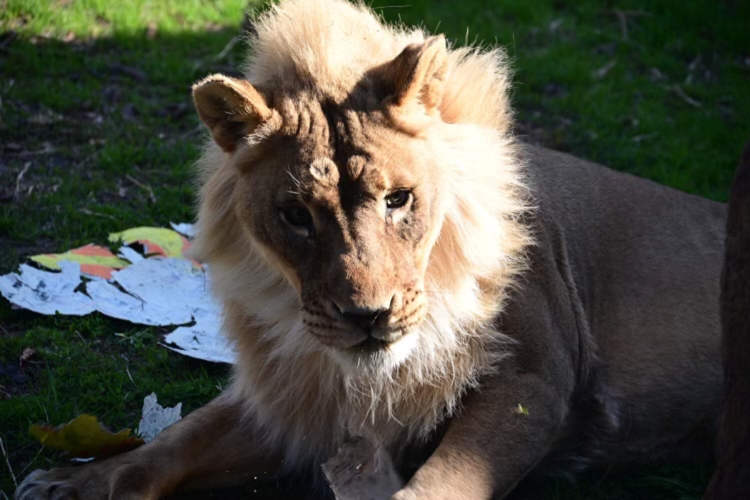An 18-year-old lioness has baffled staff at a zoo in Kansas after growing an “awkward teenage mane” after the pride’s last male lion passed away.
Looking at Zuri, you’d think she was a young lion growing his mane for the first time, but she is actually an 18-year-old female. That makes the mane around her neck pretty unusual, with only a handful of similar cases reported in the past. The lioness reportedly started growing a mane soon after the last male lion at Topeka Zoo in Kansas passed away in October of 2020. Although zookeepers don’t believe there is any connection between the lack of a male lion and Zuri’s mane, they do admit that the lioness has gotten feistier since growing the new fur, growling, snarling, and roaring more often than before.

Photo: Topeka Zoo
“I don’t think there’s really any kind of evolutionary reason for this, either lack of males or too much competition with other females or anything like that,” Kris Everatt, a conservation scientist, told Live Science. “I think it’s just a random event.”
But Zuri’s curator, Shanna Simpson, believes that there is some connection between the death of Avus, the last male lion at Toopeka Zoo and the lioness’ awkward mane.
The Topeka Zoo’s alpha lioness, Zuri, is sporting a new look following the passing of her mate two years ago. https://t.co/ZqEB4aDUK8 pic.twitter.com/ljA9M91IJb
— WIBW (@wibw) October 24, 2022
“She feels like she needs to protect her pride, so her testosterone increases,” Simpson told CJ Online. “And boom, she’s got more fur around her neck.”
Topeka Zoo has yet to conduct any hormone tests for Zuri, but all standard test results came back normal, so there is no reason to suspect that her mane is a result of any kind of cancer or any other serious condition. Hormonal imbalance could be the cause, given her old age, but the zoo doesn’t plan on conducting invasive testing just to be sure.
“We have no reason to believe she’s unhealthy in any way with what’s going on with this faux mane,” Simpson said. “She’s just very weird-looking.”
In 2016, cases of wild lionesses in Botswana growing impressive manes made international headlines, and there were also a 2011 case in South Africa and a 2018 case at the Oklahoma City Zoo, but female lions growing manes is considered extremely rare.






